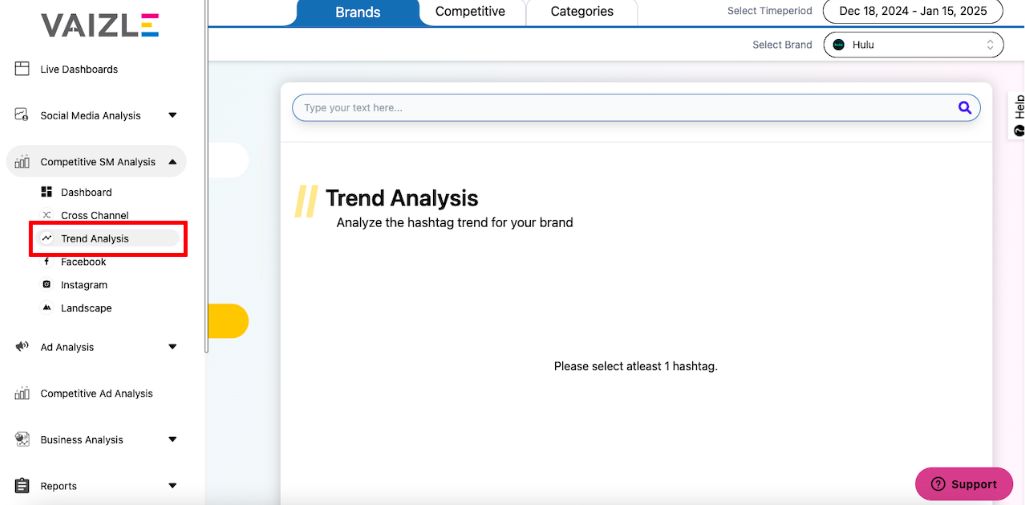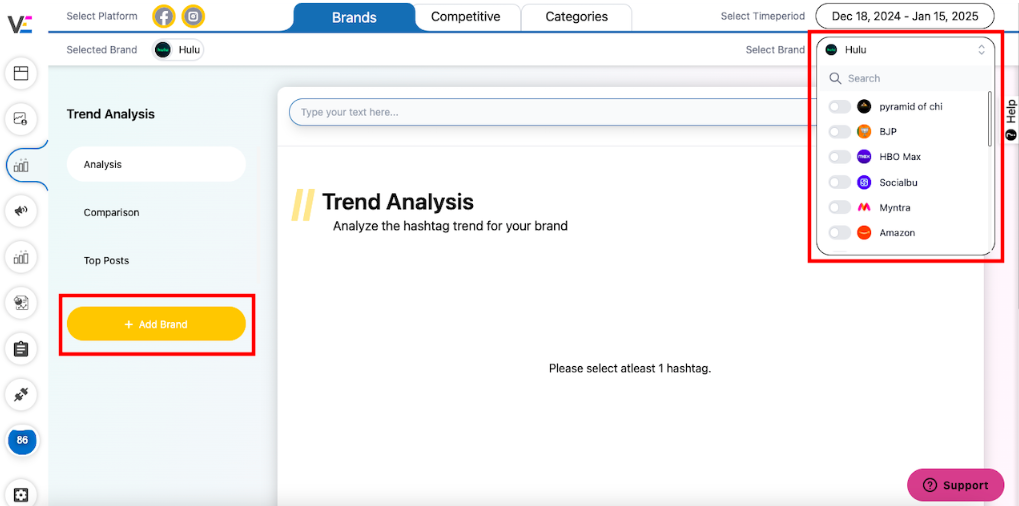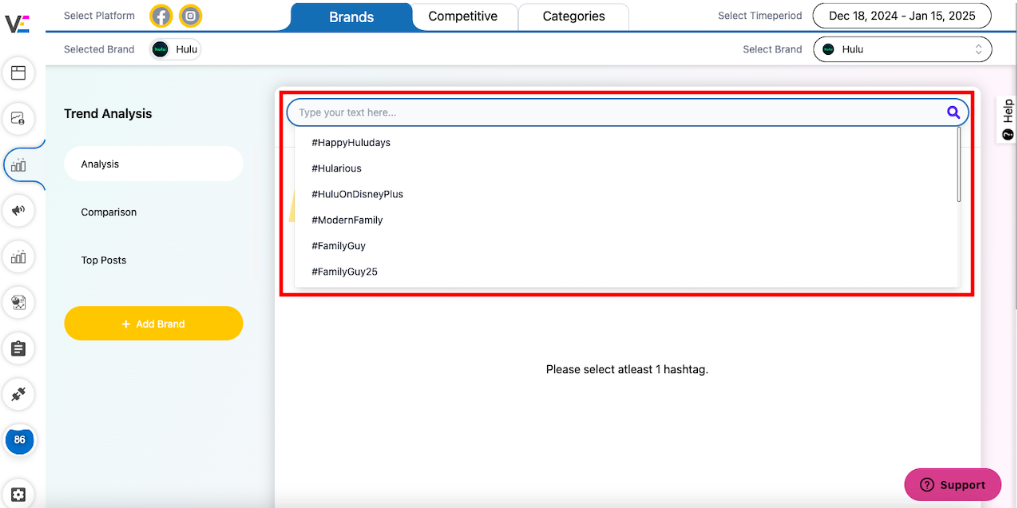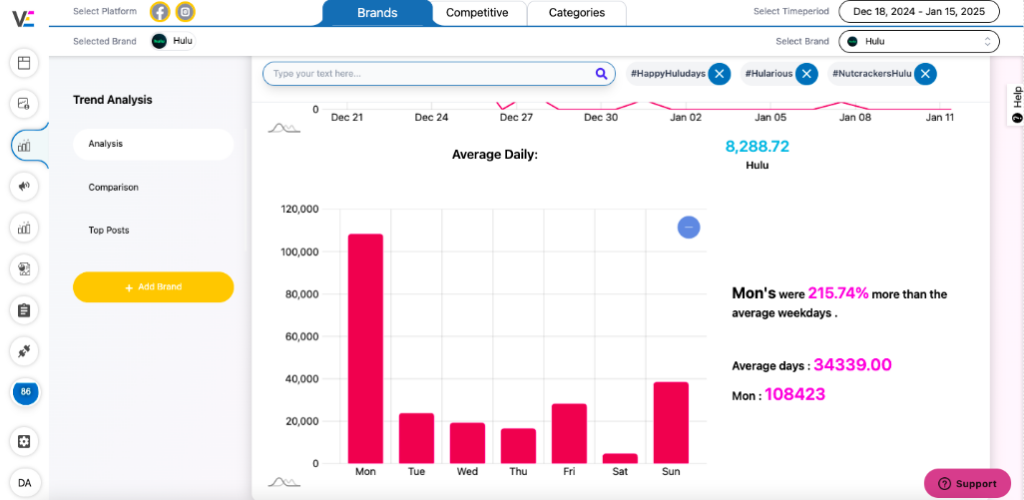Did you know hashtags were once termed as “too nerdy” by the Twitter founder?
Well, safe to say, that notion didn’t hold and today we see hashtags being used unsparingly on social media. But here’s the thing: not everyone uses them the right way.
Mostly, we see people throwing in random hashtags, hoping for magic, but that’s not how they work.
In this guide, we’ll uncover what is a hashtag, how they work, and how to use them effectively to make your content stand out. Let’s dive right in!
Hashtags are everywhere on social media, from Instagram captions to trending Twitter topics. But in exact terms–what is a hashtag?
Think of hashtags as your shortcuts to relevant content. Whether you’re a brand, influencer, or casual user, hashtags can help connect you with a larger audience interested in similar topics.
A hashtag is a keyword or phrase that comes right after by the “#” symbol. Hashtags are mostly used across social media platforms to categorize content and make it discoverable.
In simpler terms, you can consider hashtags to be labels that lets you search and engage with content about a specific interest.
The official name for the “#” symbol is the “octothorpe,” but in the social media slang, it’s commonly called a “hashtag.” Initially, the “#” symbol was used in coding and telecommunication.
When Chris Messina introduced the idea of using hashtags on Twitter in 2007, he referred to them as “channel tags.” Over time, the term “hashtag” became the universal name for this content-labeling tool, blending the “#” symbol with its tagging functionality.
Today, hashtags have evolved into essential tools for organizing, discovering, and participating in social media trends.
Hashtags make it easier to find posts about the same topic on social media. We’ve already established that. But what exactly happens when you add a “#” to your post?
When you include a hashtag like #TravelTips in your post, social media platforms automatically categorize it with all other posts using the same tag.
In terms of fancy metaphors–It’s like adding your book to the right shelf in a vast digital library, making it easy for interested readers to find it.
Social platforms use hashtags to connect your content with interested audiences.
For instance, a food blogger using #HomeCooking reaches not just their followers, but anyone exploring that topic.
It’s like having a virtual billboard that appears exactly where your target audience is looking.
Popular hashtags like #WorldCup or #OscarNight act as virtual gathering spaces. Using them appropriately lets you join these global conversations when they’re happening.
However, relevance is key – using #FootballFever on a cooking post won’t help your content reach the right audience.
But remember: A well-chosen hashtag connects your content with interested viewers, while irrelevant or vague tags (like #Nice or #Cool) simply fade into the digital noise.
🚀 Create high-quality content faster with AI
📈 Increase Likes, Shares, and Followers with the Right Hashtags
Hashtags play a big role in helping your content get noticed on social media. They make it easier for people to find your posts and connect with them.
Let’s break down why hashtags matter and how you can use them effectively.
Hashtags group similar posts together, increasing the chances of your content showing up in searches or trending topics. They help you reach people who might not follow you but are interested in the same topics.
Using the right hashtags can spark more likes, comments, and shares. They put your content in front of users who are ready to engage with it.
Hashtags let you join trending conversations and see what’s popular. They also help you track how well your posts are performing in those conversations.
Hashtags may look the same across platforms, but the way they’re used and their impact can vary widely.
Let’s dive into how hashtags work, so you can make the most of them on each platform.
Hashtags on Facebook don’t carry the same weight as they do on other platforms, but they still serve a purpose.
When you add hashtags to a post, it becomes part of a clickable category. Users can click or search for hashtags to find related content.
Best Practices:
Instagram is where hashtags truly shine. They’re key to increasing visibility and engagement.
Hashtags on Instagram help categorize your content, making it discoverable on the Explore page or through hashtag searches.
Best Practices:
Get our list of trending Instagram Reels hashtags here!
On YouTube, hashtags are used in video titles, descriptions, and above the video title as clickable links.
They help users find videos on specific topics and trends.
Best Practices:
If you’re actively creating content on YouTube, check out these best hashtags for YouTube Shorts to get started.
Hashtags on LinkedIn help your posts appear in searches and connect with professionals who follow specific topics. They’re great for boosting reach within professional networks.
Best Practices:
For LinkedIn hashtags, check out our list of LinkedIn Hashtags for More Visibility.
On Pinterest, hashtags work as keywords. They help categorize your pins and make them easier to find in searches. However, the focus is more on long-term discoverability than instant trends.
Best Practices:
Hashtags are powerful tools in digital marketing but using them effectively requires a strategy. Here are some hashtag best practices to keep in mind:
Setting clear hashtag goals helps you get the most out of your efforts. Here’s how you can do it:
Are you looking to increase brand visibility, improve engagement, or join a trending conversation? Clear goals guide your strategy. For instance, a fitness brand might aim to trend with #Fitspiration or drive engagement with #30DayChallenge.
Measure hashtag performance using analytics tools. Look at impressions, reach, and engagement rates to understand what’s working. For example, Instagram Insights can show how many people found your post through a specific hashtag.
Not every hashtag will perform well. Experiment with different combinations and analyze results. If a hashtag isn’t helping you achieve your goals, tweak your strategy.
Use hashtags to join conversations, not just to promote. Reply to comments, participate in trending topics, and use community-driven hashtags to build stronger connections.
When it comes to hashtags, a few mistakes are enough to spoil your social media strategy.
Here’s a quick guide to the do’s and don’ts:
The Do’s
The Don’ts
By following these guidelines, you can turn hashtags into powerful tools for boosting your digital marketing success.
👉 RELATED: Read our step-by-step guide on hashtag analytics.
In the last section, we talked about analytics when it comes to hashtag best practices. Now, let’s see how Vaizle simplifies this task for you.
Vaizle’s trend analysis is meant specifically to track hashtag performance, both for your own or competitor’s brands.
For example: let’s say you want to find the top hashtags used by your competitor. In this case, let’s consider Hulu.
Here are the steps to follow:
Step 1: Log in to your Vaizle account and head to “Trend Analysis” section under “Competitive SM Analysis.”

Step 2: Now select the brand. In case you haven’t added it to your brand landscape, click on the ‘Add Brand’ button. Here’s how you can proceed with that.

Step 3: Click on the search tab to enter hashtags. Vaizle will also automatically pick the trending tags used by the selected brand.

That’s it! Vaizle will now give you a detailed report highlighting these factors:

To get started, start your 7-day trial now!
So there you have it – the complete story of how a simple “#” symbol changed the way we connect online! Whether you’re sharing travel photos on Instagram, building your professional network on LinkedIn, or joining conversations on Twitter, hashtags help you get noticed in the busy world of social media.
Remember, using hashtags isn’t about throwing as many as possible into your posts. It’s about making genuine connections with people who care about the same things you do. Start small, experiment with different tags, and most importantly – have fun with it! After all, that’s what social media is all about.
Ready to put your hashtag knowledge to work? Jump in and try out some of the strategies we’ve covered. You might be surprised at how a simple # can open up a whole new world of connections!
No, you cannot use spaces or special characters in hashtags. Hashtags need to be written as one continuous word without spaces or special characters. Instead of #New York City, use #NewYorkCity or #NYC. The only symbol that works in a hashtag is the underscore (_).
It depends on the platform! On Instagram, you can use up to 30, but 10-15 is the sweet spot. For Twitter and LinkedIn, stick to 1-3 hashtags. On Facebook, less is more – 1-2 hashtags work best.
Creating a branded hashtag can be great for building community and tracking engagement! Just make sure it’s:
While hashtags work the same whether they’re uppercase or lowercase, using capital letters can make them easier to read. Compare #digitalmarketing with #DigitalMarketing. The meaning is the same, but the second one is more reader-friendly!
Low hashtag engagement usually comes down to a few common issues:
Try researching trending hashtags in your niche and mix up your hashtag combinations regularly.
Mamta is an SEO Analyst with 3 years of experience. Currently, she is spending her time on content roadmapping to drive organic growth and engagement for SaaS businesses. Mamta is also an avid cinephile who spends her spare time watching latest action and sci-fi flicks from around the world.
Copyright @VAIZLE 2025